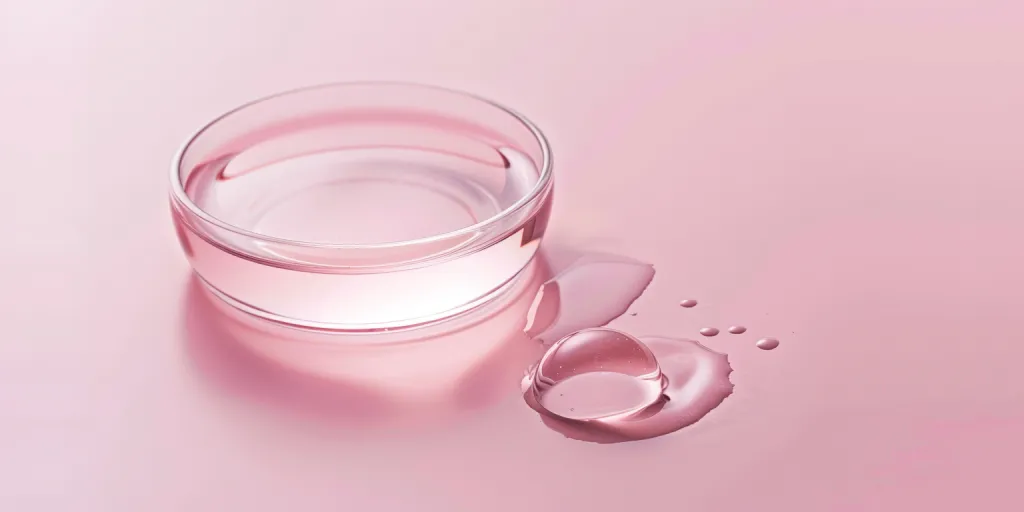Glycolic acid, a stalwart in the skincare realm, has garnered acclaim for its transformative effects on skin texture and tone. As an alpha hydroxy acid (AHA), it exfoliates the skin, revealing a brighter, more youthful complexion. This article delves into everything you need to know about glycolic acid, from its benefits and side effects to how to incorporate it into your beauty regimen.
Table of Contents:
– What is glycolic acid?
– Does glycolic acid work?
– Benefits of glycolic acid
– Side effects of glycolic acid
– How to use glycolic acid
– Top trendy products that contain glycolic acid
What is glycolic acid?

Glycolic acid is a powerhouse in the world of skincare, known for its small molecular size that allows it to penetrate the skin deeply and effectively. Extracted from sugar cane, it belongs to the family of alpha hydroxy acids (AHAs), which are widely recognized for their exfoliating properties. By breaking down the bonds between dead skin cells on the surface, glycolic acid promotes the shedding of these cells, revealing the fresher, healthier skin beneath.
This AHA is celebrated not only for its exfoliating capabilities but also for its ability to stimulate collagen production. Collagen is a crucial protein that gives our skin its structure and elasticity. As we age, our natural collagen production decreases, leading to the appearance of wrinkles and fine lines. Glycolic acid’s ability to boost collagen synthesis makes it a valuable ingredient for anti-aging treatments and products.
Moreover, glycolic acid is highly versatile, suitable for a wide range of skin types and conditions. It can be found in various concentrations in numerous skincare products, from cleansers and toners to serums and creams. This adaptability makes it an accessible ingredient for anyone looking to enhance their skincare routine, regardless of their skin’s specific needs.
Does glycolic acid work?

The effectiveness of glycolic acid in skincare is well-documented, with numerous studies supporting its benefits. Its ability to penetrate the skin deeply is a key factor in its success. By exfoliating the skin at a cellular level, glycolic acid can improve the skin’s overall appearance, texture, and tone.
One of the primary ways glycolic acid works is by accelerating the skin’s natural exfoliation process. This helps to clear clogged pores, reduce the appearance of fine lines, and fade hyperpigmentation. Regular use of glycolic acid can lead to smoother, clearer, and more radiant skin. However, it’s important to note that results can vary depending on the individual’s skin type, the concentration of glycolic acid used, and the product’s formulation.
In addition to its exfoliating properties, glycolic acid also has moisturizing benefits. It can help to increase the skin’s hydration levels by enhancing its ability to retain moisture. This dual action of exfoliating and hydrating makes glycolic acid a highly effective ingredient for improving skin texture and reducing the signs of aging.
Benefits of glycolic acid

Glycolic acid offers a multitude of benefits for the skin, making it a favorite among dermatologists and skincare enthusiasts alike. Its exfoliating action promotes cell turnover, which can help to diminish the appearance of fine lines, wrinkles, and acne scars. By removing dead skin cells and unclogging pores, glycolic acid also helps to prevent acne breakouts, making it beneficial for those with acne-prone skin.
Furthermore, glycolic acid can improve skin hydration, contributing to a plumper, more youthful complexion. Its ability to increase collagen production further aids in reducing the signs of aging, as it helps to firm and tighten the skin. Additionally, by evening out skin tone and reducing hyperpigmentation, glycolic acid can create a brighter, more uniform complexion.
Another significant benefit of glycolic acid is its anti-inflammatory properties, which can soothe redness and irritation. This makes it suitable for sensitive skin types when used in appropriate concentrations and formulations. Overall, glycolic acid’s wide range of benefits makes it an invaluable addition to any skincare regimen, addressing multiple concerns with a single ingredient.
Side effects of glycolic acid

While glycolic acid is generally safe for most skin types, it can cause side effects, particularly when used in high concentrations or without proper sun protection. Common side effects include redness, dryness, peeling, and irritation. These reactions are typically mild and subside with continued use as the skin adjusts to the acid.
It’s crucial to introduce glycolic acid into your skincare routine gradually, starting with lower concentrations and increasing as your skin becomes more accustomed to it. Additionally, using a broad-spectrum sunscreen is essential when using glycolic acid products, as they can increase the skin’s sensitivity to the sun, leading to sunburn and photoaging.
People with sensitive skin or certain skin conditions, such as eczema or rosacea, should exercise caution when using glycolic acid. It’s advisable to consult with a dermatologist before incorporating glycolic acid into your skincare routine if you have sensitive skin or are concerned about potential reactions.
How to use glycolic acid

Incorporating glycolic acid into your skincare routine can yield significant benefits, but it’s important to use it correctly to avoid irritation and achieve the best results. Start by choosing a product with a suitable concentration of glycolic acid for your skin type and concerns. For beginners, a product with a lower concentration (around 5-10%) is recommended to minimize the risk of irritation.
Apply glycolic acid products to clean, dry skin, following the instructions on the product packaging. It’s best to use glycolic acid in your nighttime routine, as it can make your skin more sensitive to sunlight. Always follow up with a moisturizer to help soothe the skin and lock in hydration.
Remember, consistency is key when using glycolic acid. It may take several weeks to see noticeable improvements in your skin. However, it’s also important not to overdo it; using glycolic acid too frequently or in too high concentrations can lead to irritation and damage the skin barrier.
Top trendy products that contain glycolic acid

The popularity of glycolic acid has led to a wide range of products containing this effective ingredient. From cleansers and toners to serums and masks, there’s a glycolic acid product for every step of your skincare routine. While specific brands are not mentioned here, look for products that clearly state the concentration of glycolic acid and are formulated with additional soothing and hydrating ingredients to enhance the benefits and minimize potential irritation.
For those new to glycolic acid, starting with a gentle cleanser or toner can be a great way to introduce this AHA into your routine. More experienced users may prefer serums or creams with higher concentrations for more pronounced effects. Regardless of the product type, ensure you’re also incorporating a high SPF sunscreen into your daytime routine to protect your skin from UV damage.
Conclusion
Glycolic acid stands out as a versatile and effective ingredient in skincare, offering a range of benefits from exfoliation and hydration to anti-aging and brightening. While it’s generally safe for most skin types, understanding how to use it properly and being aware of potential side effects is crucial to achieving the best results. By incorporating glycolic acid into your skincare regimen, you can enjoy a clearer, smoother, and more radiant complexion.




